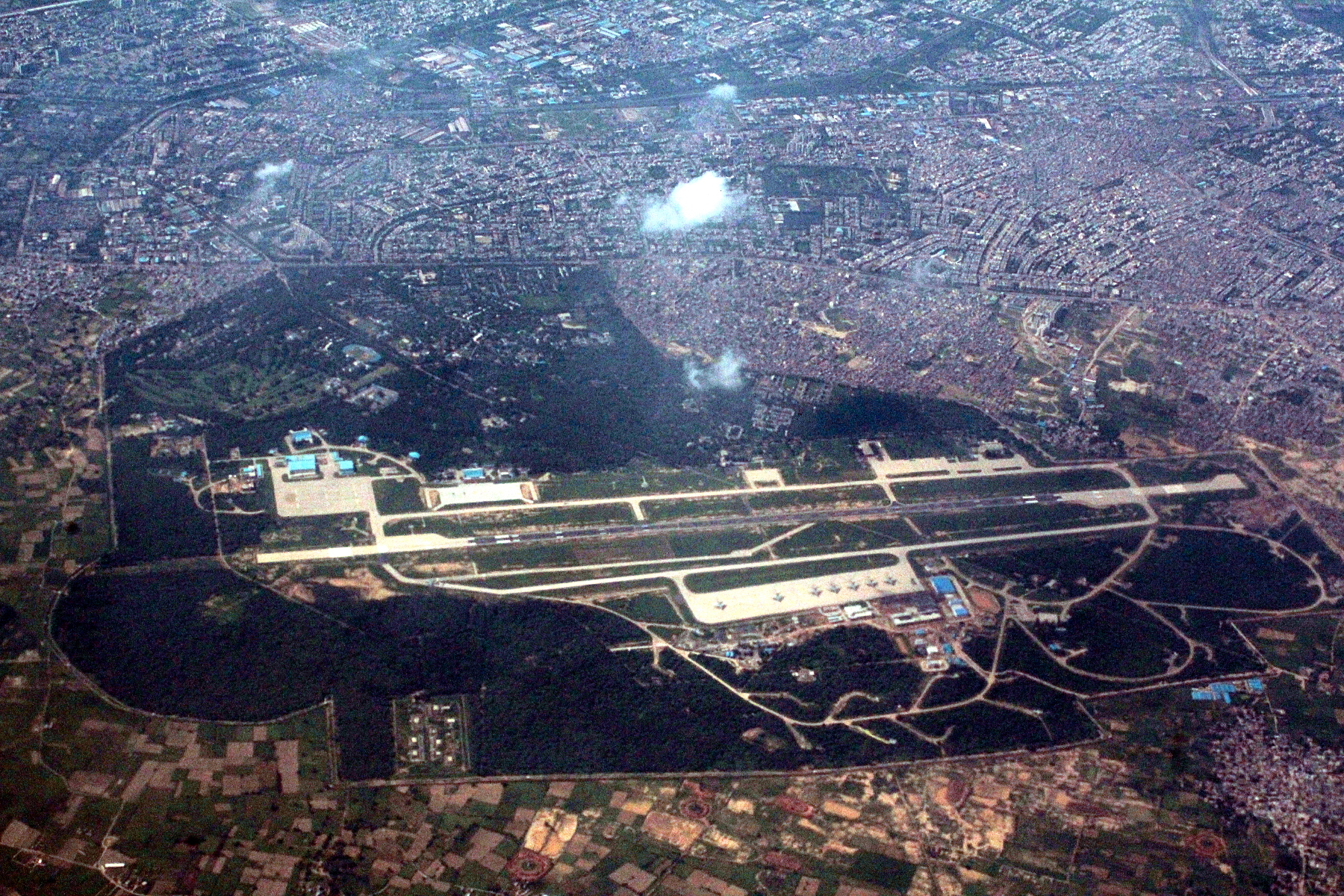|
Sarvottam Yudh Seva Medal
The Sarvottam Yudh Seva Medal (''Ultimate War Service Medal'') is India's highest wartime distinguished service decoration. It is awarded for the highest degree of distinguished service in an operational context, which includes times of war, conflict, or hostilities. The award is a war-time equivalent of the Param Vishisht Seva Medal, which is India's highest peacetime distinguished service decoration. The medal has been awarded only three times in history. They have been awarded to officers commanding a large force in a conflict. Lieutenant general (India), Lieutenant General A.S. Kalkat was the overall commander of the Indian Peacekeeping Force (IPKF) in Sri Lanka. Air marshal (India), Air Marshal Vinod Patney was the Western Air Commander and Lieutenant General H.M. Khanna was the Northern Command (India), Northern Army Commander during the Kargil War. Eligibility The Sarvottam Yudh Seva Medal may be awarded posthumously. It is awarded for "distinguished service of the most ex ... [...More Info...] [...Related Items...] OR: [Wikipedia] [Google] [Baidu] |
Param Vishisht Seva Medal
Param Vishisht Seva Medal (PVSM) (International Alphabet of Sanskrit Transliteration, IAST: , ) is a Military awards and decorations, military award of India. It is the highest peacetime medal of the Indian Armed Forces, and is awarded for "distinguished service of the most exceptional order." The medal is awarded for "distinguished service rendered by personnel of the Armed Forces." All ranks of the Armed Forces, including Territorial Army (India), Territorial Army, Auxiliary Force (India), Auxiliary and Reserve forces, Military Nursing Service, Nursing officers and other members of the Nursing services and other lawfully constituted Armed Forces are eligible for the medal, which may be awarded multiple times as well as posthumously. History The Param Vishisht Seva Medal was originally instituted as the "Vishisht Seva Medal, Class I" on 26 January 1960. Five other medals were instituted on the same day: the Sainya Seva Medal, Sena Medal, Nau Sena Medal and the Vayu Sena Medal. I ... [...More Info...] [...Related Items...] OR: [Wikipedia] [Google] [Baidu] |
Vinod Patney
Air Marshal Vinod Patney, SYSM, PVSM, AVSM, VrC is a retired Indian Air Force officer. He is currently Director General Centre for Air Power Studies. Career Patney was commissioned in Indian Air Force in 1961. He has participated in conflict of 1965 for which he was awarded a Vir Chakra. He also participated in the 1971 India-Pakistan war. He is former Director General of HelpAge India. Vir Chakra citation Air Marshal Patney was awarded the Vir Chakra for operations during the 1965 India Pakistan War. His Vir Chakra Citation reads as follows: Awards and decorations Patney was awarded the SYSM, PVSM, AVSM Ati Vishisht Seva Medal (AVSM, ) is a military award of India given to recognize "distinguished service of an exceptional order" to all ranks of the armed forces. The award is a peacetime equivalent of Uttam Yuddh Seva Medal, which is a Wartime ... and VrC in his career with the Indian Air Force that lasted more than four decades. References Ind ... [...More Info...] [...Related Items...] OR: [Wikipedia] [Google] [Baidu] |
Operation Pawan
Operation Pawan ( ''Kãryvãhi Pavan'', lit. "Operation Wind") was the code name assigned to the operation by the Indian Peace Keeping Force (IPKF) to take control of Jaffna from the Liberation Tigers of Tamil Eelam (LTTE), better known as the Tamil Tigers, in late 1987 to enforce the disarmament of the LTTE as a part of the Indo-Sri Lanka Accord. In brutal fighting lasting about three weeks, the IPKF took control of the Jaffna Peninsula from the LTTE, something that the Sri Lankan Army had tried but failed to do. Supported by Indian Army tanks, helicopter gunships and heavy artillery, the IPKF routed the LTTE at the cost of 214 soldiers and officers. Background The Tamil Tigers had fought to establish a Tamil homeland, separate from Sri Lanka, in the northern and eastern portion of Ceylon (Tamil Eelam). This effort led to a series of armed conflicts with the Sri Lankan Military. In the late 1980s India, feeling considerable pressure from its Tamil citizens, began to intervene ... [...More Info...] [...Related Items...] OR: [Wikipedia] [Google] [Baidu] |
The Gazette Of India
''The Gazette of India'' is a public journal and an authorised legal document of the Government of India. It is published weekly by the Directorate of Printing Department of Publication, a subordinate office of the Ministry of Housing and Urban Affairs and printed by the Government of India Press, Nilokheri, Government of India Press. As a public journal, ''The Gazette'' prints official notices from the government. Publishing information in the ''Gazette'' is a legal necessity by which official documents Coming into force, come into force and enter the public domain. Ordinary gazettes are regularly published weekly on a particular day of the week whereas extraordinary gazettes are published every day depending upon the urgency of the matters to be published. Publication The publication of ''The Gazette'' is executed as per the government of India (allocation of business rules) issued from time to time by the cabinet secretariat. The Department of Publication is headed by t ... [...More Info...] [...Related Items...] OR: [Wikipedia] [Google] [Baidu] |
Kargil War
The Kargil War, was fought between India and Pakistan from May to July 1999 in the Kargil district of Ladakh, then part of the Indian-administered state of Jammu and Kashmir (state), Jammu and Kashmir and along the Line of Control (LoC). In India, the conflict is also referred to as Operation Vijay (, ), which was the codename of the Indian military operation in the region.It is also sometimes referred to as Operation Vijay Kargil so as to distinguish it from Operation Vijay (1961), Operation Vijay, the 1961 operation by the Indian Armed Forces, military of India that led to the capture of Goa, Daman and Diu and Anjidiv Islands. The Indian Air Force acted jointly with the Indian Army to flush out the Pakistan Army and paramilitary troops from vacated Indian positions along the LoC, in what was designated as Operation Safed Sagar (, ). The conflict was triggered by the infiltration of Pakistani troops—disguised as Insurgency in Jammu and Kashmir, Kashmiri militants—into stra ... [...More Info...] [...Related Items...] OR: [Wikipedia] [Google] [Baidu] |
Northern Command (India)
The Northern Command is a Command (military formation), Command of the Indian Army. It was originally formed as the Northern Army of the British Indian Army in 1908. It was scrapped upon India's independence in 1947 and later re-raised in 1972. Currently, the XIV Corps (India), XIV Corps (Leh), XV Corps (India), XV Corps (Srinagar), I Corps (India), I Corps (Mathura) and XVI Corps (India), XVI Corps (Nagrota) are under its control. Its present commander is Lieutenant General (India), Lieutenant General Pratik Sharma, Pratik Sharma. History The Presidency armies were abolished with effect from 1 April 1895 when the three Presidency armies became the Indian Army. The Indian Army was divided into four Commands: Bengal Command, Bombay Command, Madras Command and Punjab Command, each under a Lieutenant-general (United Kingdom), lieutenant general. In 1908, the four commands were merged into two Armies: Northern Army and Southern Army. This system persisted until 1920 when the arrang ... [...More Info...] [...Related Items...] OR: [Wikipedia] [Google] [Baidu] |
Western Air Command
The Western Air Command (WAC) is the regional command of Indian Air Force headquartered in New Delhi. It is the largest and most important Air Command of the IAF, comprising sixteen Air Force Bases (AFBs), and is responsible for aerial defence of North India. WAC's Area of Responsibility extends from Jammu and Kashmir to Rajasthan, also covering the states of Himachal Pradesh, Punjab, Haryana, New Delhi and Western Uttar Pradesh. History WAC was raised in 1947 as the No. 1 Operational Group which controlled all the flying units of Indian Air Force, including the flying training units. On July 22, 1949, the No. 1 Operational Group was re-designated as the Operational Command. In 1958, the rank of the Commanding Officer of Operational Command was upgraded from Air Commodore to Air Vice Marshal and later, to the rank of Air Marshal. In the aftermath of the India-China War of 1962, the IAF began the process of demarcation of specific areas of responsibility, and splitting up of t ... [...More Info...] [...Related Items...] OR: [Wikipedia] [Google] [Baidu] |
Indian Peacekeeping Force
Indian Peace Keeping Force (IPKF) was the Indian military contingent performing a peacekeeping operation in Sri Lanka between 1987 and 1990. It was formed under the mandate of the 1987 Indo-Sri Lankan Accord that aimed to end the Sri Lankan Civil War between Sri Lankan Tamil militant groups such as the Liberation Tigers of Tamil Eelam (LTTE) and the Sri Lankan military. The main task of the IPKF was to disarm the different militant groups, not just the LTTE. It was to be quickly followed by the formation of an Interim Administrative Council. These were the tasks as per the terms of the Indo-Sri Lankan Accord, signed at the behest of Indian Prime Minister Rajiv Gandhi. Given the escalation of the conflict in Sri Lanka, and with the pouring of refugees into India, Rajiv Gandhi took the decisive step to push this accord through. The IPKF was inducted into Sri Lanka on the request of Sri Lankan President J. R. Jayewardene under the terms of the Indo-Sri Lanka Accord. The force ... [...More Info...] [...Related Items...] OR: [Wikipedia] [Google] [Baidu] |





